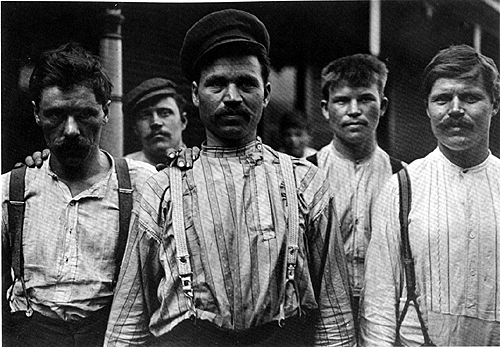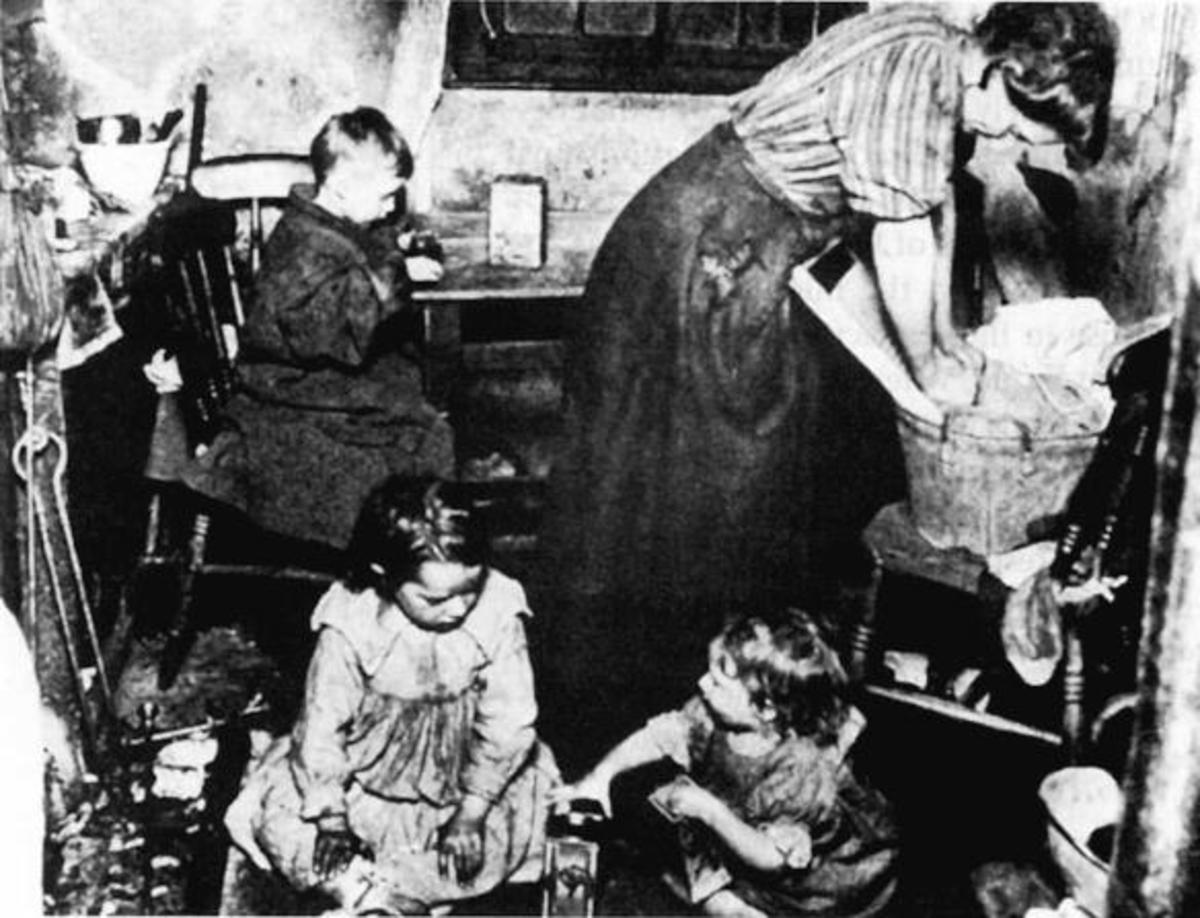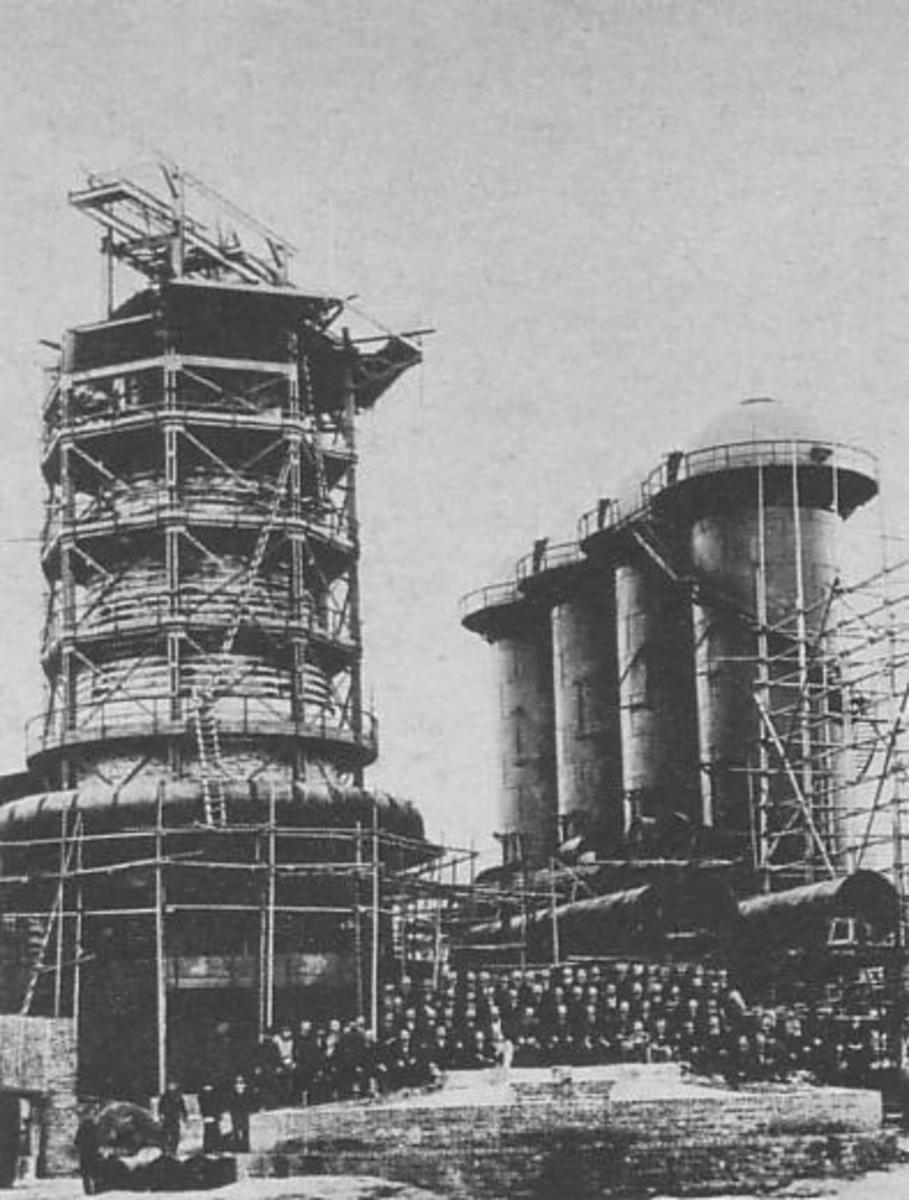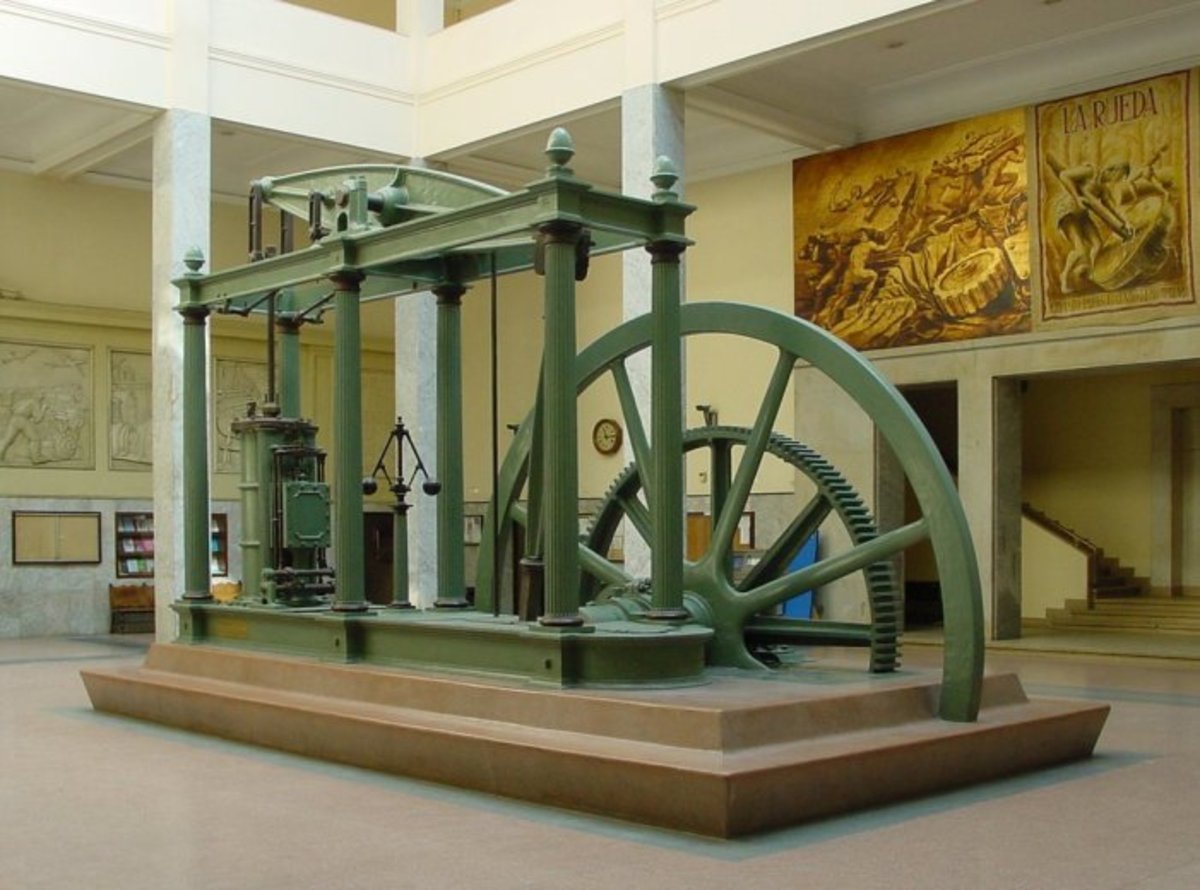The impact of the Industrial Revolution in the USA
The evolution of Industrial Workers
The Evolution of Industrial Workers in the United States
(An Imaginary Scene where economics professor answers various questions in his classroom)
by Michael M. Nakade, MA
Prof.: Today’s topic is “Industrial Workers in the United States.” This topic addresses how most folks earned their living in the olden days. Like everything else, things evolved over time. Of all the events in the history of this nation, which event is the biggest in terms of its impact on how people lived?
Student A: I would say the Industrial Revolution because it fundamentally changed how people worked and earned their living. It created a major paradigm shift.
Prof: I agree with you 100%. BTW, you mentioned “paradigm shift.” Would you care to explain what this is?
Student A: A paradigm shift is a fundamental shift in how people think and operate. The Industrial Revolution brought on so many changes that people began living differently thereafter.
Prof: Yes. Your answer is spot on. The Industrial Revolution is a big topic, and it would take a yearlong course to cover everything. But, for the sake of getting today’s discussion going, I will summarize it as follows:
1) Mechanization and the efficient use of energy sources
2) Pooling of financial resources or capital in the community to create factories and purchase expensive machineries,
3) Improved efficiency in production, making consumer products less expensive, and 4) workers began feeling alienated due to simple and repetitive duty.
Student B: Professor, I think I know where you are going with these three changes. You’re going to mention the factory system established in Lowell, Massachusetts. Am I right?
Prof: You are correct. The factory system brought on a series of fundamental changes in how people worked and lived. It was, indeed, a paradigm shift. For the first time in human history, work was performed on a large scale in a single centralized location. Francis Cabot Lowell went to England and learned about this new way of production. The bottom line was that it dramatically increased productivity.
Student C: Yeah, but I just hate the sound of “increased productivity” because this was achieved at the expense of the workers. The factory owners and investors focused so much on their increased profit margin that they neglected their collective responsibility to those whom they hired.
Prof: I knew that the topic of factory work would lead to the problem of the exploitation of workers by capitalists. I do hear your complaint, and it is legitimate. But, let’s be objective and detached here. We’re studying history and are not making judgments as to who was bad and who was good. We are just going to describe what took place. With this being said, let’s discuss the “Lowell Girls” who were the poster children of the early Industrial Revolution in the United States.
Student A: I see this phenomenon as a double-edged sword. The factory owners wanted to hire young girls because they were a cheap source of labor and easy to control. For the “Lowell Girls,” factory work opened up a whole new world, one which allowed them to get away from their unexciting farm life. These women felt empowered when they earned their own paychecks. One girl by the name of Harriet Robinson later became an advocate for factory workers.
Prof: I am impressed that you remember the name Harriet Robinson. Yes, indeed. She became an advocate and later testified in the House of Representatives. The point of all this is that here came a new way of earning a paycheck. We are no longer talking about being a store clerk in a mama papa store. We are now talking about a large factory in which everyone was regulated by the clock. The hiring of workers became a social issue, not just an issue between a factory owner and an individual job seeker. The working conditions and wages were impacting a large segment of the population in the towns in which the factory was located. The ever-present tug of war between factory owners and workers became a fact of life in this new industrialized age. Again, it was a paradigm shift.
Student B: What about the financing aspect of the Industrial Revolution? I remember my 7th grade history teacher telling me that Hamilton’s vision of the United States became a reality. The banks play important roles in all of this. Right?
Prof.: Hamilton understood the meaning of capitalism even before capitalism became fully practiced. Simply put, it costs money, a ton of it, to start up a factory with its expensive machines. Entrepreneurs could be wealthy to begin with, but most were not wealthy enough to build a big factory just on their savings. So, what would they need to do?
Student C: Borrow money from a bank or raise funds through selling stocks.
Prof: Exactly. That’s what capitalism is. A large-scale business requires large-scale borrowing and receiving money from investors. There are risks involved. Your business can go belly up, and you can lose everything. But, your business may succeed, in which case you would enjoy a sweet financial pay off. Hamilton’s greatness is that he totally understood the role of the bank in this financial mechanism. His insistence on having the Bank of the United States managing the economy scared someone like Jefferson because this meant more power to the central government. But, the Bank of the United States straightened the young nation’s finances and laid the foundation for future growth. Today, we all understand how important the availability of loans is to the economy.
Student D: What else came out of the Industrial Revolution?
Prof: I think you want to know about the ongoing chain reactions that occurred after the establishment of the factory system. We talked about the introduction of factory workers and how they their workdays were dictated by the clock. We also talked about the expansion of financial institutions to meet the needs of risk-taking entrepreneurs. Now, imagine a situation in which a massive number of cotton shirts are produced at a factory. What will have to happen next?
Student D: Naturally, those shirts must be sold. If not, this factory will close down and the workers will be laid off.
Prof: Exactly. Mass production demands mass consumption. Remember that. The factory owners must find consumers. Being able to transport these shirts to the consumers in ways that are quick and cheap is now a matter of utmost importance. So, what’s next?
Student A: Roads and canals need to be developed.
Prof: Absolutely. What we call transportation and market revolutions followed. Gov. DeWitt Clinton of New York understood this. He was instrumental in building the Erie Canal in the 1820s. With this canal in place, New York City’s harbor became connected to the Great Lakes regions and the entire Midwest. Mass-produced shirts could be sold all over the place, giving factory owners a chance to make money. The transportation companies could make money. Retail stores could also make money. Workers could earn their paychecks. With their paychecks, they could buy more things to enjoy life. The economy keeps expanding, and the next thing you know, the standard of living for all involved is raised. People have more free time to receive an education. As the entire population becomes more intelligent, there are more inventors among us. Those geniuses offer us new gadgets and technology to make our lives more enjoyable. The United States produced such men as Thomas Edison, Cyrus McCormick, the Wright Brothers, and Charles Goodyear. Isn’t this wonderful or what?
Student C: Not so fast, Professor. Economy has its boom and bust. It’s cyclical. Good things come to an end in any economy. What you just described was an economic utopia. Such a utopia doesn’t exist in real life.
Prof: I was hoping that someone would say that. Business is never easy because consumers are fickle. Furthermore, there are competitions. If you come up with a product that is exciting to the consumers, you can enjoy your success for a little while. But, your rivals in the industry may come up with a better and less expensive product tomorrow. Or, the raw materials that you need became prohibitively expensive. There are many ways for your company to decline. You’ll have to be one step ahead of the game at all times, and that isn’t easy.
Student D: Professor, what about the problem of the wealth gap between the factory owners and their workers? When 1% of the population controls 60% of the nation’s total wealth, we have a problem, don’t you think?
Prof: You have made a good point. The issue of the wealth gap came to the forefront of people’s minds during the Gilded Age when the super wealthy showed off their wealth in the most ostentatious manner possible. If you visit the town of Newport in Rhode Island, you can see those rich people’s mansions. The poor people, on the other hand, were literally eking out a living.
Student B: That’s the thing about the Capitalists. They are driven by their greed. They exploit their workers because they see workers as replaceable cogs in a machine. It is unbelievable that they once let children as young as eight years old work up to 10 hours a day for a very small wage. I can see why Marxism appealed to many of those exploited workers.
Prof: It did not take long for those workers to realize something. There were more of them than there were owners. They had their strength in numbers. But, we must remember that labor unions did not emerge overnight.
Student B: Is that because the factory owners intimidated the workers with violence and the threat of being fired? I know that some of those owners hired private strike-breaking detectives to enforce their iron control over the workers.
Prof: You are partially correct. The owners resorted to various tactics to destroy the unionization of the workers. But, another big reason was the poor public relations of the labor unions. There were many foreign-born anarchists in the United States during the Gilded Age, and those anarchists resorted to bombing and other terroristic activities. The native-born American people just couldn’t stomach the radical elements of labor unionism. The federal government, too, sided with the big businesses to discourage massive and crippling labor strikes. It was an uphill battle for the workers.
Student B: I am not convinced that these are the reasons why labor unions were slow to grow. After all, they had a numerical advantage. In a democratic society, the majority view wins. Why didn’t they unite and support their political candidates? Then, their voices would be heard in Washington, D.C.
Prof: A very good point. The answer to your question is simple. The workers often could not agree on common goals. Some flirted with extreme ideas like Marxism. Others simply wanted a nickel more per hour. Fights erupted over whether or not to admit women or African Americans. Immigrants were often viewed with hostile eyes. However, most did agree on one major issue — the eight-hour day. But even that agreement was often not a strong enough glue to hold the group together. 1 (37)
Student B: How about Socialism? It’s not communism. Why didn’t Socialism take hold in the United States?
Prof: There was a man named Eugene Debs, and at the peak of his popularity, he was quite influential. He ran for the presidency four times and garnered over one million votes in the election of 1912. But like I said, the American people generally did not warm up to the idea of the government running private industries. The idea of free enterprise was too deeply rooted. Socialism did creep in during FDR’s New Deal. In fact, many people accused FDR for being a socialist. We now identify FDR’s New Deal programs as Welfare Capitalism.
Student B: I see. But in the long run, is it accurate to say that organized labor was the reason that positive changes happened to working Americans?
Prof: No doubt. There were hundreds of labor strikes and much blood spilled before the rights of working Americans were recognized. The United States went through a period called the Progressive Era. News laws were legislated, and labor unions won the right to exist and negotiate contracts through collective bargaining. We, as a nation, are better off because of it. When working class people attain a middle-class status, they don’t demand the overthrow of the system of government. The nation can enjoy a sense of stability. But, we must remember. It took workers many years of kicking and screaming to get there. The capitalists were not willing up to easily give up their large pieces of pie. Okay. Class dismissed.









